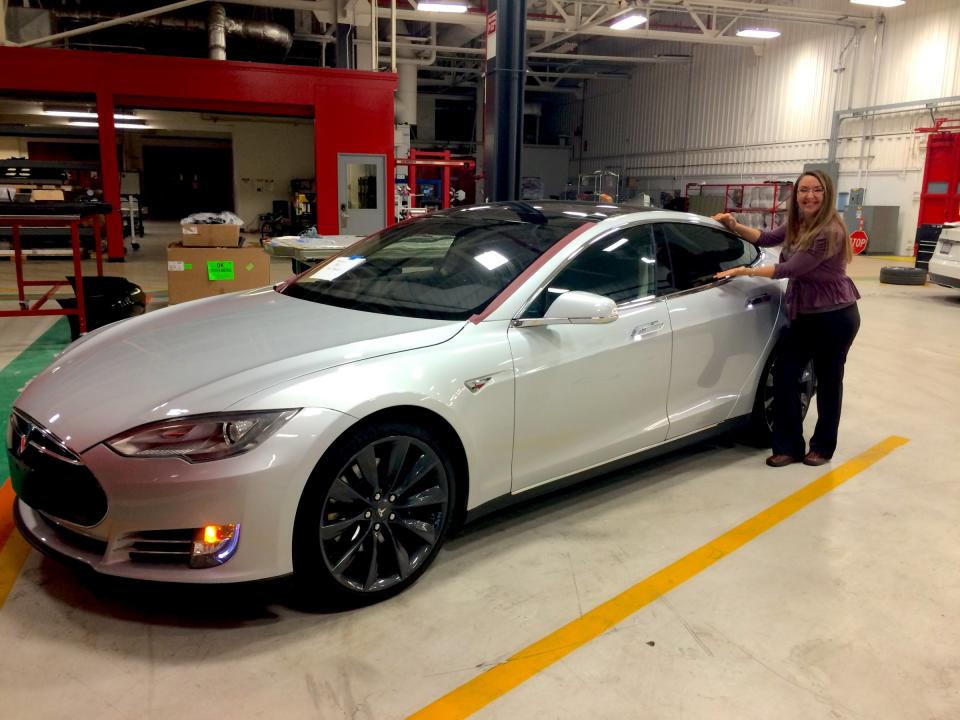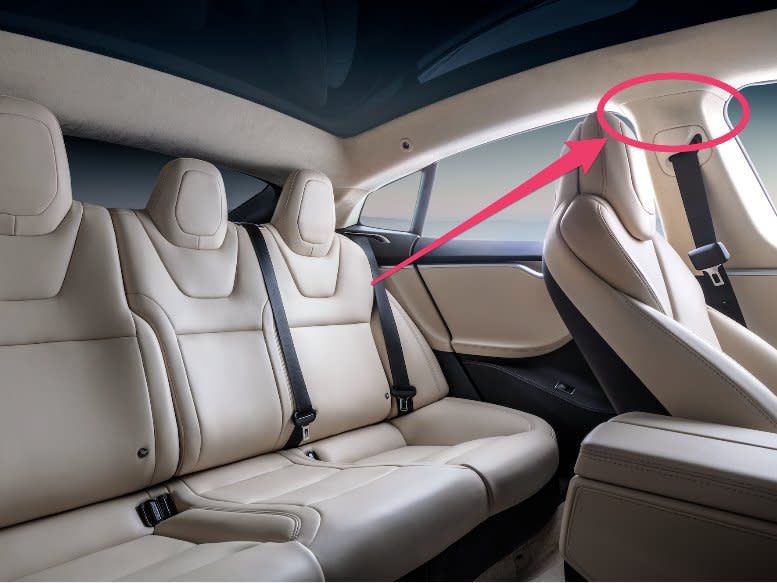A former Tesla engineer says the company silenced her entire team after they brought up safety and quality issues (TSLA)

Business Insider
Martin Tripp, a former Tesla employee being sued by the company, has filed counterclaims including allegations that Tesla tried to intimidate him after he spoke out about waste, quality, and safety issues.
Another former Tesla employee, Cristina Balan, told Business Insider the company silenced her and seven other employees on her team who internally voiced concerns over waste and quality.
Tesla ignored repeated requests for comment on this story.
At a 2014 meeting, Balan and Tesla's interior-design team voiced concerns about the quality and safety of some of Tesla's parts. She claims that these concerns were ignored by Tesla and that she was then pushed out of the company.
She later initiated an arbitration with Tesla claiming whistleblower status and alleging discrimination and retaliation.
In early August, a former Tesla process technician, Martin Tripp, countersued the company.
Tripp claims that Tesla, which filed a lawsuit against him in June, falsely accused him of hacking into the company's operating system. He also alleges Tesla waged a smear campaign against him in order to silence his claims of poor part quality and waste at the company.
For another former Tesla employee, Cristina Balan, Tripp's story feels familiar.
Balan began working for Tesla as an engineer in 2010. In a series of interviews with Business Insider, Balan said she was pushed out of Tesla four years later.
Balan says this happened shortly after she and her seven-member interior-design team shared concerns with their superiors about poor part quality and waste they observed on the job. Balan sued Tesla alleging discrimination, retaliation, and other issues. A multiyear arbitration ensued.
Business Insider reviewed emails, testimonies, text messages, and other information from Balan's tangle with Tesla.
Here's how a once celebrated Tesla engineer — who used to work on top-secret projects for Tesla's top brass and whose initials were actually carved onto the battery of the Model S — says she wound up on the wrong side of the company.
It could be a cautionary tale for what Tripp is about to face.
A Saturday venting session spirals: 'I feel like a sheep in a slaughterhouse'
In March 2014, Balan and her interiors team had brewing concerns about Tesla.
They worried about design flaws in the cars and felt their concerns were being overlooked or mishandled by managers.
According to internal emails and testimony from the arbitration, Balan's team had every intention of taking its issues straight to Tesla's CEO, Elon Musk.
Musk had, after all, told employees that Tesla was not a hierarchical company. They should feel free to approach him whenever they deemed it necessary.
Before she scheduled a meeting with Musk though, Balan reached out to one of the heads of her department, Chris Porritt, who was Tesla's vice president of vehicle engineering. Porritt asked to meet with Balan and the team about their concerns.

Business Insider
The team met with him on a Saturday for about two hours.
There, they described an aggressive, high-pressure atmosphere, as well as a version of business as usual at Tesla that was full of part defects, opaque relationships with suppliers, and waste.
The engineers said they felt frustrated because they believed their immediate bosses might have been shielding them from contacting suppliers, making it difficult for the interiors team to finish projects thoroughly and correct design flaws.
Balan said she suspected this bottleneck was really just a way for her bosses to hide mistakes. For instance, her concern about a so-called rat hole — a gap she had found in the design of the Model S's roof headliner that separated the roof from the rest of the car — had been met with what Balan saw as clear resistance from her managers.
Tesla, she claimed, ultimately stuffed a piece of Styrofoam in the gap of the $100,000 car to fix it. And while the DIY-sounding solution didn't present a safety issue, Balan said it created a rattling noise in some of the vehicles that customers later complained about.

Business InsiderAt the Saturday meeting, members of the group shared instances when they felt their attempts to fix faulty Tesla car parts were thwarted by management.
One engineer said he had wanted to fix a problem with the Model S's driver's seat floor mat since 2012. As designed, the floor mat could interfere with the brake, the engineer claimed.
But he said that when he tried to investigate the issue with the supplier, his managers stopped him and either demanded to take over or asked him to focus on something else.
The engineer told the group that the still unfixed floor mats were a safety issue, even as Tesla had tens of thousands of cars on the road. Porritt agreed. Porritt also lamented that the company might have to scrap $90,000 worth of defective parts.
Tesla ignored repeated requests for comment on this exchange.
Porritt agreed with just about everything the team said during that long Saturday meeting. He listened when the employees complained about what they said was bullying by managers. He thanked them for meeting and said that what was happening on their team was certainly not "the Tesla way." He also said the team could trust him, and he promised to help find a solution.
Instead, in the following days, the team members were pulled into meetings with their bosses and pressured to recant their statements, according to text messages, emails, and arbitration documents seen by Business Insider.
"I feel like a sheep in a slaughterhouse," one engineer wrote in a text to teammates.
Another engineer who attended the meeting later testified that he felt pressured to deny his attendance at the meeting with Porritt and any complaints about the team's superiors. He said he felt that if he didn't, he might lose his job, and he claimed the rest of the team felt the same way.
Balan's final days
Tesla handled Balan differently from her colleagues.
In emails dated April 2, 2014, her managers and a member of Tesla's human-resources team discussed how to deal with her going forward, and, according to emails viewed by Business Insider, they did not see much of a future for her at Tesla.
Balan understood she had become an increasing headache to her immediate superiors she constantly clashed with, so superiors and HR discussed a plan to either coach her or determine other paths for her, according to an email.
They decided to check in with Balan about her health rather than any work-performance issues; she had expressed concern about it to a superior months before and had health issues during her first stint at Tesla. Then they would decide the best way forward, according to their correspondence.
"If for any reason we are unable to substantiate the health issue, we will need to then set a different plan of action," Tesla's HR wrote in the email to Balan's managers and Porritt.
Tesla ignored repeated requests for comment on this email exchange.
Balan ultimately left Tesla on April 16, 2014, less than a week after Tesla's counsel told her via email that she was the only person on her team who "accused" her managers "of wasteful spending and the covering up that wasteful spending."
"You were the only one who made the accusation to Chris," Tesla's counsel said in an email. "You were the only one who made such an accusation to HR. Thus there is no reason for me to speak to the others who complained to Chris."
Balan said it felt as though Tesla wanted to go on as if the Saturday meeting with Porritt never happened and none of her colleagues had ever spoken up at the company.
Electric culture shock
In the arbitration that followed Balan's departure, Tesla claimed that Balan resigned in 2014 because she didn't get along with her bosses and couldn't get work done.
Tesla's lawyers argued that she complained often and was concerned with only her own designs.
A former colleague familiar with the situation who felt Balan was a "creative," capable engineer also said she was overly excitable and too intense.
But Balan maintains a belief that her resignation was prompted by a campaign to "push her out of Tesla" after she and her team complained about quality issues with cars.
Balan said she believes that even in the subsequent arbitration, Tesla found ways to continue to discredit and silence her.
Balan recorded conversations with her colleagues while at Tesla, but the former San Francisco Superior Court judge who presided over the arbitration would not allow any to be used in the case.
The arbitrator found that Tesla underpaid Balan by misclassifying her as an employee below her talent level. But he did not find that there had been any gender discrimination or that Balan was a whistleblower.
The defects she was concerned about, like the "rat hole," were simply not a safety risk to the arbitrator, and Tesla's witnesses also denied that the defects were severe.
Balan said she was offered to settle with Tesla "seven or eight times" and the money would have allowed her to stop working for at least a decade. But Tesla wanted Balan to sign away her right to speak about her experience, and she found that troubling, so she never agreed.
"We are living in an era of autonomous driving and artificial intelligence," Balan told Business Insider. "We cannot afford to have engineers on that level being afraid to speak up" when they see mistakes, she added. "We cannot afford this."
2 Teslas. Same Tripp.
To Balan, her story is a tale of two Teslas.
During her first stint at the company, Balan worked in the battery department. There, she said, everything was about pushing creativity and innovation and saving every penny the fledgling company could find.
But her experience on the interiors team felt different.
"As soon as the Model S came out the door and Elon realized how cool he'd become, everything went down the drain," she said.
She said she felt Tesla went from a scrappy startup with high integrity to one engulfed by Silicon Valley hype.
When a company becomes the hot company to work for and rich with funding, the type of people who flock to work there can change. Priorities sometimes change. And culture can change too.
"The reason Tesla is what it is is because it transformed from a company of innovation to a company of sales," Balan said. "The only thing they care about is how many cars they come up with per week. It doesn't matter what the quality is."
This opinion is perhaps why Balan saw so much of her story in Tripp, the former technician countersuing Tesla.
Like Balan, Tripp is trying to claim whistleblower status after he pointed out perceived issues with Tesla's production process to Business Insider.
He claims in his filing that the quality of Tesla's battery manufacturing is low — to the point of being dangerous — and that he fears batteries could overheat and go into what's known as thermal runaway. He also claims that Tesla's production process is so wasteful that it's not living up to its environmental mission.
Also, like Balan, he claims that now the company is trying to intimidate him into silence.
"I think they are just too full of themselves," Balan said of Tripp's situation. "They think Tesla can get away with everything. And it worked — up until now."
See Also:

